The Dun Cow is far more than just a great old Sunderland pub
and live on Freeview channel 276
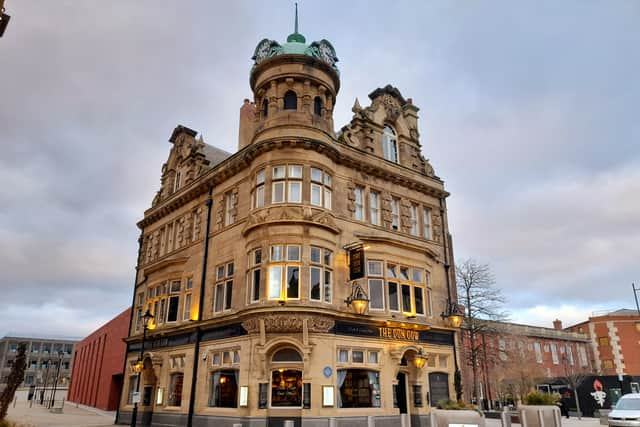

The Dun Cow on Sunderland's High Street West is one of the best known and most loved pubs in the North East.
It is what journalists are obliged to call "an architectural gem" and is what your dad referred to as a "proper pub". In 2023 it was named as one of the best bars in Europe.
Advertisement
Hide AdAdvertisement
Hide AdGenerations of visitors to the next-door Empire Theatre have called in before and after a show; as have some very famous performers. It's a very accommodating place, although 30-odd years ago it was somewhat woolier.
When I were a lad...
As a young man, following a big-money transfer from the Greens, I worked as a barman in the Dun Cow for a year-and-a-half. It was, to say the least, an experience.
Happy "hour" at the time was 11am to 1.30pm, then 4pm to 6pm; an hour consisting of 270 minutes - and there were still complaints when it ended.
Highlights included sing-songs for the minimally talented, domino cards, a gentleman who could imitate a duck laying an egg and the occasional physical threat. There were many others.
Advertisement
Hide AdAdvertisement
Hide AdDuring the 1990 World Cup there was a memorably poor Mexican wave, performed by just six patrons. It lasted for 15 minutes, but only stretched from the side entrance to the fruit machine. Amusing, but pitiful.
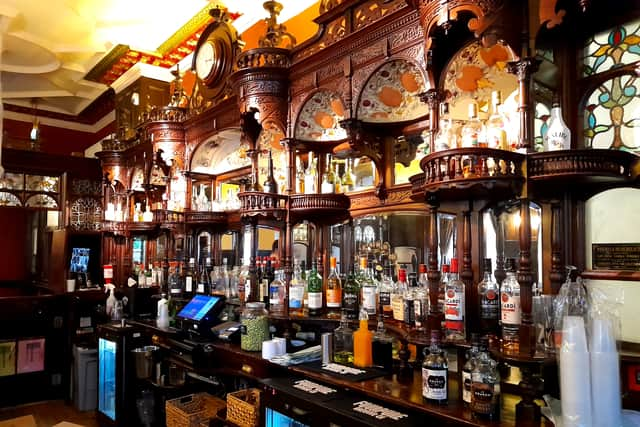

Some of the regulars were pensioners who had earned their money. Others were perfectly respectable people in gainful employment. A third group was less transparent about their income.
The Dun Cow back then occupied a different world and it required considerable but welcome change to make it the civilised watering hole it is today, where the beer is delightful and the conversation endlessly varied.
History and architecture
There has been a pub on the site since at least 1834. However, the current building was opened in 1901, six years before the Empire Theatre.
Advertisement
Hide AdAdvertisement
Hide AdIt was built at the behest of Robert Deuchar Ltd, a huge Edinburgh-based brewery and pub chain of the time who also owned The Black Bull (now Vesta Tilley's), Norfolk Hotel and the Crown & Thistle further down High Street West (demolished 1966).
Sunderland builders Thomas Pearson Shaftoe were awarded the contract and construction cost a whopping £2,000.
The Dun Cow is a four-storey building; five including the cellar. The second floor has usually been occupied by the pub's management over the last 123 years.
Many years ago I made my only visit to the fourth floor. Back then it contained little more than the innards of the then-broken clock and the odd dead pigeon. Matters have greatly improved since.
Advertisement
Hide AdAdvertisement
Hide AdThe architect was one Benjamin Ferdinand Simpson, described on the pub's own website as "somewhat eccentric".
The building is wonderfully ornate with a corner turret, topped by a copper dome bearing two clock faces. The clock was finally repaired in 2019 having been out of action since the 1980s.
Mr Simpson designed a number of beautiful buildings in the area, including Emerson Chambers in Newcastle, now occupied by a branch of Waterstone's and strikingly similar to the Dun Cow. He died in Sussex in 1940.
The "eccentric" aspect of the architect is reflected in the ornamental exterior of the pub; a veritable sandstone menagerie.
Advertisement
Hide AdAdvertisement
Hide AdTake a close look amid the stone foliage and you can see a cow, which seems reasonable. The appearance of a cat, frog and lizard require further explanation - which we don't have.
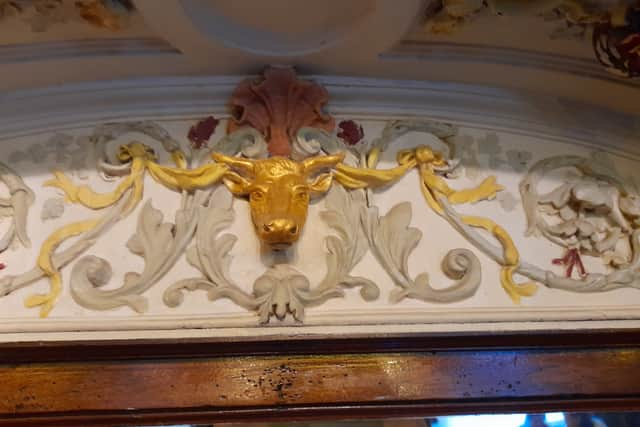

English Heritage also makes much of the building's nook shafts, graduated slate, moulded segmental door hoods, curved mullion and loads of other stuff that hardly anyone understands.
However, it is the interior of the pub that really puts it on the map. This includes the ceiling and fireplace, but more particularly the wooden bar fittings with its "indo-Gothic web". All were painstakingly restored by experts in 2014.
CAMRA have described the Art Nouveau bar back as “one of the most stunning in Britain”. Beyond saying it is intricately ornate, it is difficult to do it justice with the mere written word. It has to be seen in the flesh, as it were, which is why it's a minor tourist attraction.
Advertisement
Hide AdAdvertisement
Hide AdThe story goes that in the 1970s, after his show in the Empire, Hollywood musical (and Dallas) legend Howard Keel gazed at it admiringly and thought "Oh what a beautiful back bar", before attempting to buy it and have it shipped to his home. He was prevented from doing so by the bar's preservation order.
If you've never seen it, you've missed out.
The name
"Dun" means greyish-brown (you know what a cow is, don't be silly). In contradistinction to common practice today, when pubs are named after the first thing to enter the owner's head, there is a reason for the name. In fact it is religious in origin.
There are at least seven Dun Cows in County Durham which historically includes Sunderland (please remember, there is no such place as Tyne and Wear). Tony Blair and George W Bush famously frequented the Dun Cow in Sedgefield in 2003.
The story goes that in the year 995 some monks were moving the body of St Cuthbert, who had died in 687, to a place called Dun Holm meaning "Hill Island", later called Duresme and finally Durham.
Advertisement
Hide AdAdvertisement
Hide AdDevoid of sat-nav, the clerics couldn't find Dun Holm but overheard a milkmaid asking a milkmaiding colleague if she had seen her dun cow.
She was told that the animal been seen grazing near Dun Holm. This meant the monks could locate the appointed plot. Cuthbert was duly planted on the site which became Durham Cathedral.
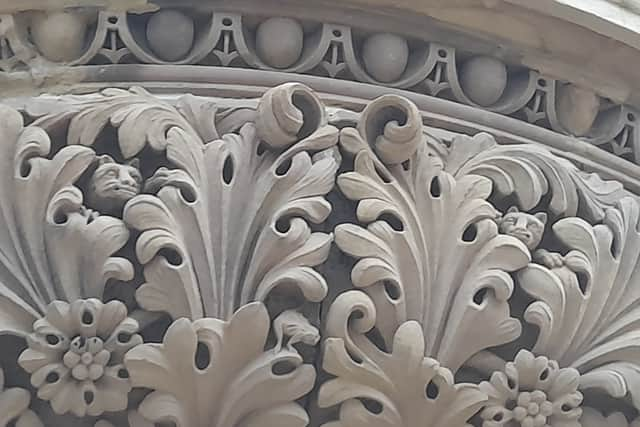

The tale is probably apocryphal. But as Sunderland's Dun Cow is not too far from a bar named after a speech impediment, it provides a comparatively solid and thoroughly fascinating reason to thus name a pub.
The stars
The Dun Cow has attracted many celebrities in its time, due to its proximity to the theatre.
Advertisement
Hide AdAdvertisement
Hide AdWhen I worked there a delightful old gentleman, whose name I have sadly forgotten, told me about Vesta Tilley. The gentleman must have been about the same age as the pub and could recall meeting the music hall superstar in there as a youngster.
In the 1950s Laurel and Hardy called in (Stan had been well acquainted with Sunderland since his youth). Howard Keel we have mentioned.
Alas, when I worked there the glitterati never surpassed visits by Bella Emberg, who was touring with Russ Abbot, and Frank Carson. I can confirm that Mr Carson would regularly opine "That's a cracker" in his personal life too.
I once saw Rik Mayall posing for photographs outside. But he didn't come in.
Advertisement
Hide AdAdvertisement
Hide AdIn 1991, shortly after I had found another job, ballet dancer Rudolf Nureyev called in for a Guinness while he was in town. This was quite sensational. Nureyev was world famous; a true international star.
So naturally I wasn't there; although I did see Stu Francis of Crackerjack fame in there a week later.
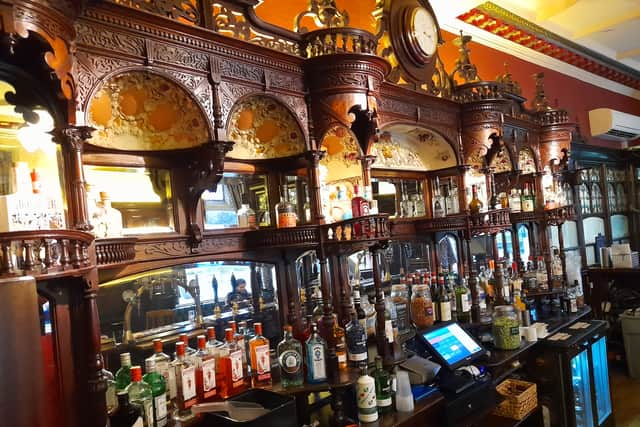

And now...
There were some wilderness years for the pub, before it was taken over by the MAC Trust in 2014 as part of a £36million regeneration of Sunderland's building heritage. The regeneration has been a huge success, with the area now something for Wearsiders to be proud of.
The pub is among a clump of listed buildings, which includes the Peacock, Empire Theatre, Mowbray Almshouses, Minster and court.
The Dun Cow is more than a pub. It is what journalists are also obliged to call "an institution".
Comment Guidelines
National World encourages reader discussion on our stories. User feedback, insights and back-and-forth exchanges add a rich layer of context to reporting. Please review our Community Guidelines before commenting.